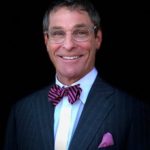Youth has its advantages when it comes to one’s facial appearance. The skin is generally smoother and plump with volumizing collagen and a plentiful supply of cheek fat.
However, not every young woman or man is blessed with full cheeks. Some people’s cheeks stop short of being fully developed while in their teens or early 20s, or they are naturally flat.
Fortunately, there are a number of cosmetic options to choose from that can add fullness to the cheeks through a generic procedure known as Cheek Augmentation . The purpose of this procedure is to provide sufficient contour to the face for long-term results that appear natural and are satisfying to the patient.
Implants, Dermal Fillers, and Fat Injections
Age has little to do with the need for cheek implants. What does matter is whether the patient’s bone framework is mature enough and that there is proper shape to the existing cheeks and midface area. Surgical implants, which come in a variety of different sizes, shapes, and materials, can add volume to the cheek area to achieve the look you want. Cheek implants in general are best used for patients with flatter cheekbones, a condition which is not likely to change with age.
Cheek implants are used to establish a permanent new base to the cheeks. For younger people, this may not be necessary physically as they tend to have an abundant supply of fat in the cheeks to begin with. Moreover, many young patients may decide later on that they no longer want the same look. In these instances, dermal fillers provide a satisfactory, cost-effective, and temporary solution to the problem of lack of cheek volume.
Voluma is one such temporary dermal filler that is considered in many ways to be superior to other products because its effect lasts 2 years.Voluma is made up of hyaluronic acid that can be dissolved if you are not happy with the outcome.Perlane and Radiesse are also good products that add volume. All three require no downtime and carry fewer risks of side effects and complications when compared with cheek implants.
Fat injections, like dermal fillers, add fullness to the cheek area without the need for surgery. They are also used to augment below the cheeks where surgical implants don’t work as well. Because the fat is the patient’s own, there is minimal risk of allergic reaction or infection. The recovery time tends to be a bit longer.
Fat injections and dermal fillers are effective tools used in cheek augmentation that work very well in patients of all ages.
Talk to a qualified facial plastic surgeon to find out which procedure meets your goals and offers the look you desire.
Dr. Edwin F. Williams is certified by the American Board of Facial Plastic and Reconstructive Surgery, the American Board of Otolaryngology and he is a Fellow of the American College of Surgeons, the American Academy of Facial Plastic and Reconstructive Surgery and the American Academy of Otolaryngology – Head and Neck Surgery. If you’re considering a cosmetic procedure, and want to consult with an experienced New York facial plastic surgeon, call the Williams Center at 1-800-742-2797.
